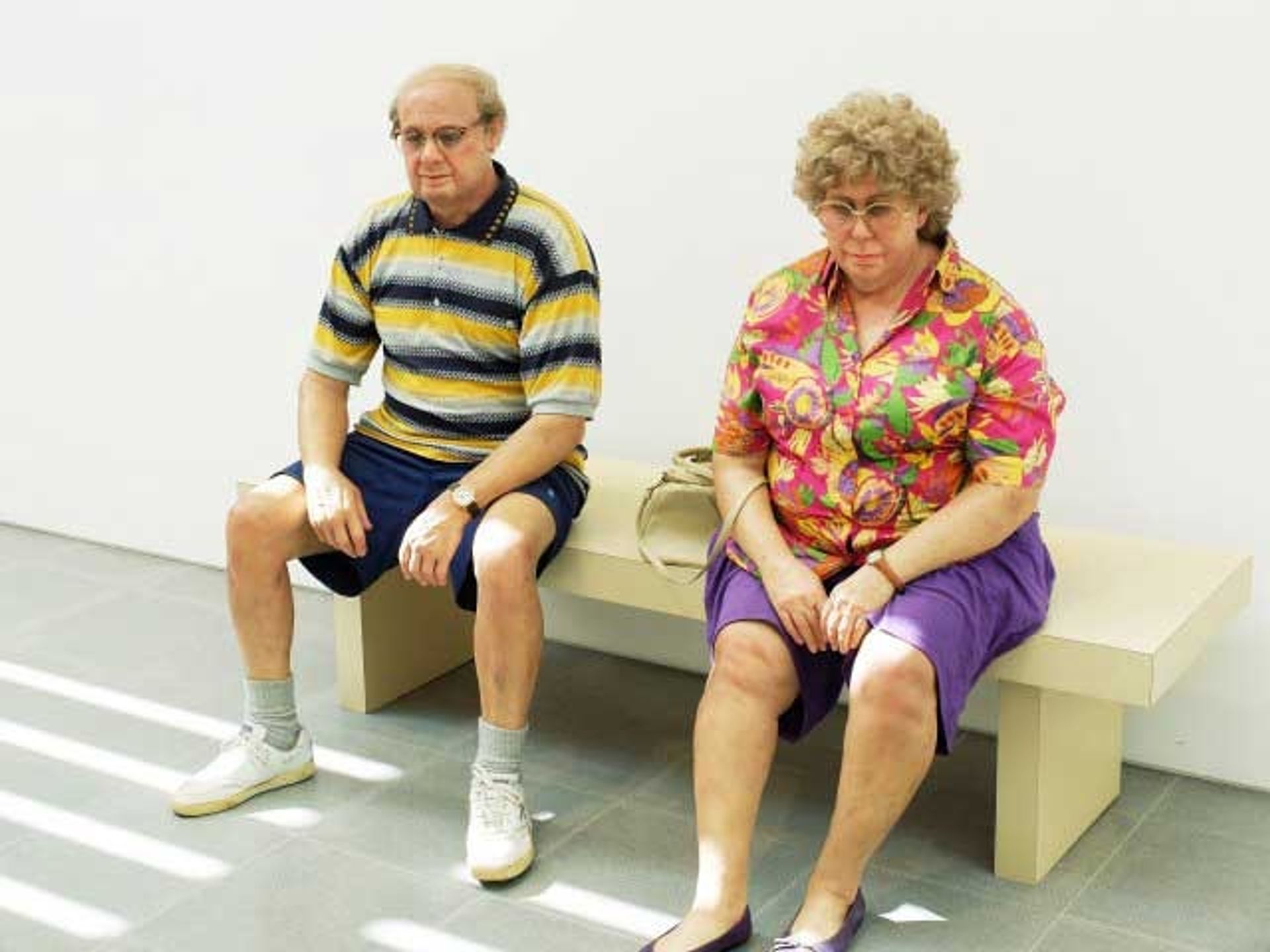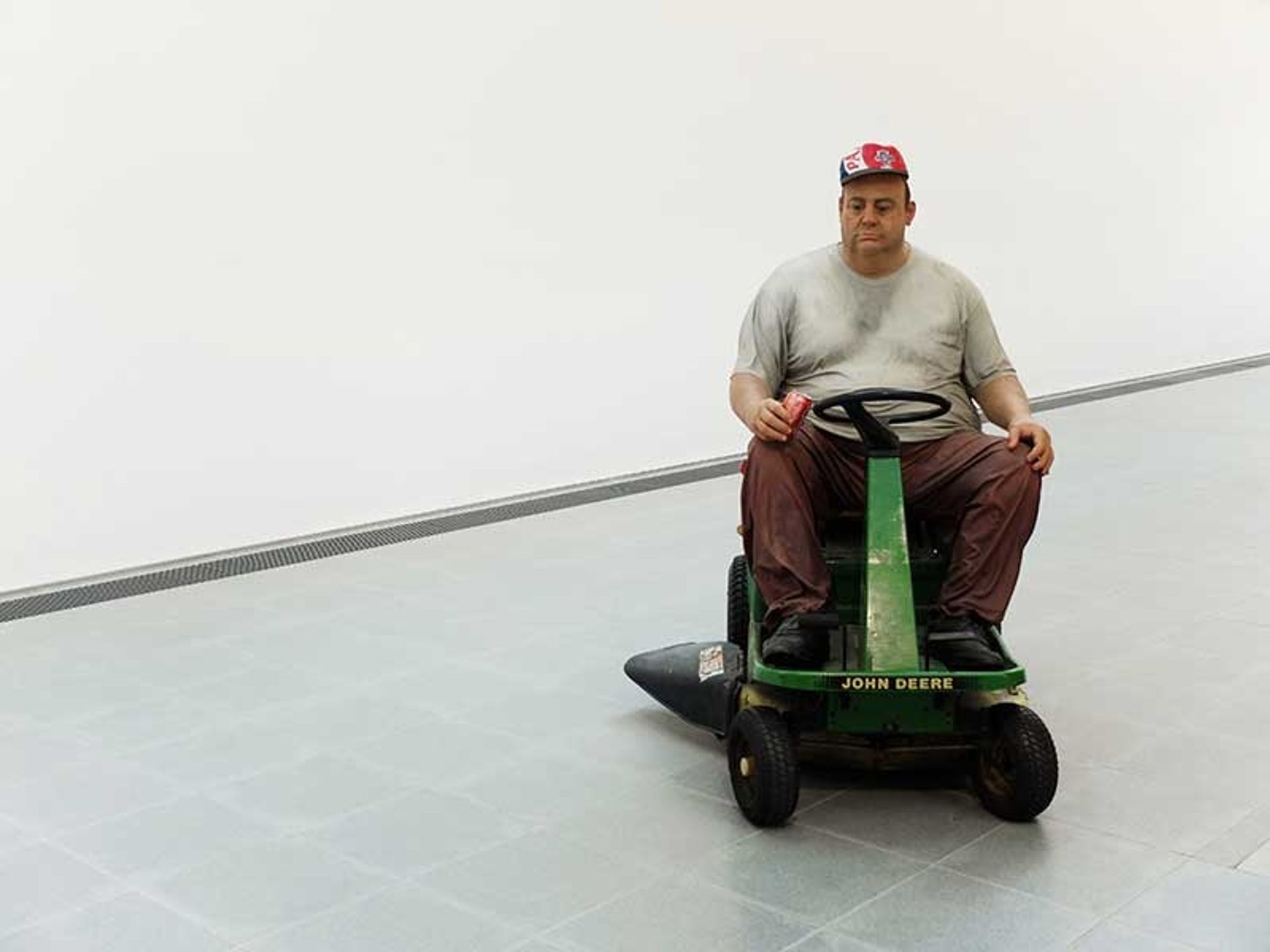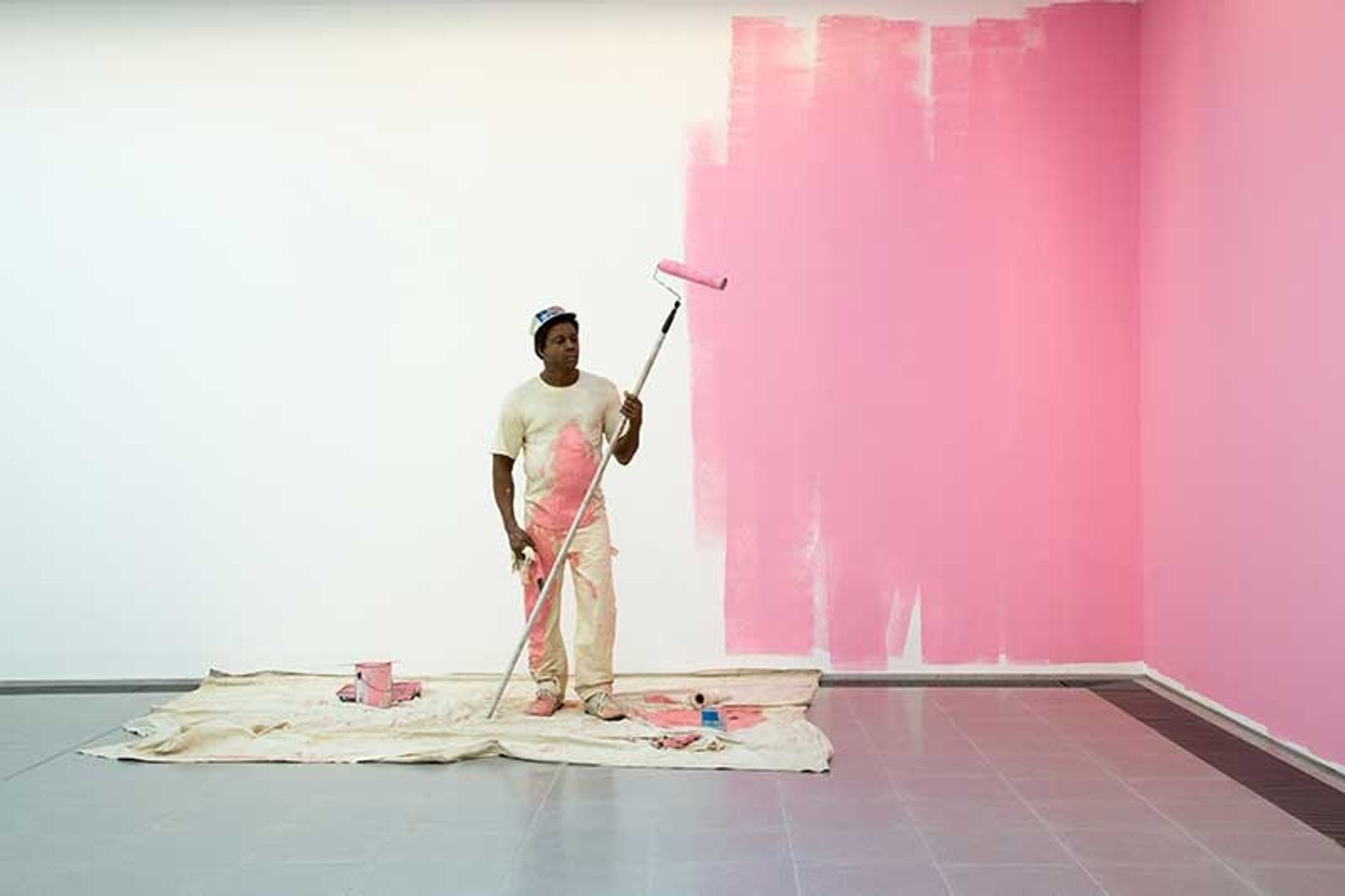Photorealism is an anomaly. Since its emergence in the 1970s, it has come to represent a rather atypical area of contemporary art, one that prioritises technique over all else and is judged on its ability to replicate. To spend some time with a painting by Chuck Close or Noel Mahaffey or Robert Bechtle is to hear a stream of comments about the quality of the similitude on show. In its elevation of the recognisable, Photorealism has allowed itself to become far too understandable, and in a climate where the growing wish is to be challenged by art, understandable is just not that interesting.
One artist who devoted himself to this mode was the American sculptor Duane Hanson (1925-1996), who spent his entire career creating faultlessly lifelike portraits of downtrodden figures from polyester and resin and, later in his career, bronze. Almost an exact contemporary of the anti-pictorial artist Donald Judd, Hanson’s mimetic realism was peculiar, and, from an early point, there was a backlash. In a 1989 interview, the artist spoke of the damning critical response to his early sculptures, works that dealt with issues such as racial profiling, war and abortion: “Throw it out in the street”, he mimics. “[We’ve] got women and children coming in here.” Through prioritising the explicit over the censored or implied, Hanson’s tableaus confronted viewers with unpleasant truths they had long strived to ignore.

While contentious, this exposure was something of a succés de scandale for Hanson, and following a move from Miami to New York in the late 1960s, he was given a solo exhibition at OK Harris Gallery, while Riot (1968), a depiction of police brutality, was included in the exhibition Human Concern/Personal Torment at the Whitney Museum of American Art in New York. Regardless of this newfound publicity, shortly after relocating to New York, Hanson altered his approach. He was no longer interested in producing direct, provocative works that could foreground those caught in public struggles, but instead found inspiration in the quieter plight of the American blue collar worker; in “those that do not stand out”, as he once put it. The focus of an exhibition at London’s Serpentine Sackler Gallery—Hanson’s first survey show in London since 1997—it is these later works that challenge the assertion that Photorealism is solely an exercise in technique.
Although their sartorial choices are passé and distinctly American, here we are met by figures that resonate with our own experience, and it touches a nerve. Queenie II (1988), a black cleaning woman caught mid-shift; Homeless Person (1991), no longer able to raise his cardboard plea for food; Old Couple on a Bench (1994), their conversation exhausted: these characters are emblematic of people we see every day, but people we may overlook, and it is this that Hanson wants to emphasise. With each dejected figure, long since lost in the depersonalising mass of society, we are presented with an anthropomorphised reflection of our own world. The reflection is as damning as it is brutally honest, but ultimately it leaves us with a more acute awareness of both the condition of our fellow humans and our own position in the grand scheme of things.

It is not, however, this alone that leads us to connect with these figures. Rather, it is the fact that we are denied any comprehensive backstory. While the works themselves are hyper-realistic, they are also oblique, and therefore accommodating of exterior interpretations. Hanson leaves areas of absence that are wide enough for us to enter into and explore. It is because of this that we reach past the visual qualities of House Painter I (1984/1988) and Man with Hand Cart (1975), for example, and attempt to deconstruct each hunched shoulder and absent expression. The varicose veins, the bruised wrists, the chewed fingernails: our interaction originates in a recognition of the known, but it quickly surpasses this as our focus is redirected towards a story that the artist intentionally omits.
The earliest and weakest piece in the exhibition, Trash (1967), illustrates the importance of this evasive quality to Hanson’s work. Recalling the 1966 sculpture Abortion, a smaller-than-life-size piece depicting a deceased pregnant woman cloaked by a white shroud, Trash is a rubbish bin holding, among other things, a lifelike doll with a plastic bag wrapped around its head, presumably suffocated before it was left amongst the detritus. The comment here is explicit, the subject matter alien from our banal reality, and although its shocking nature inspires a level of discomfort, it is resistant to any substantial exterior involvement. Unlike the abstruse figures of Man on Mower (1995) and Lunchbreak (1989), Trash is presented to us as a complete and predetermined argument, and therefore there is nothing left for us to solve. There is no mystery, and therefore no incentive to pursue meaning any further.

Despite the strengths of this exhibition, Photorealism still strikes me as a restricted, even fated art. This semi-retrospective runs the risk of becoming little more than a blue-collar Madame Tussauds, and while not wholly negative, it illustrates how Photorealism occasionally runs the risk of becoming a gimmick. But at the very least, this exhibition demonstrates that Photorealism has the capacity to do more than simply fetishise artistic technique. Writing in Davie, Florida, in 1982, Hanson considered the highest goal of an artist: “For me”, he wrote, “it is to change the world if even in a small way—by making the viewer become aware of something in life that was always there, but was unnoticed”.
Harry Thorne is Assistant Editor at The White Review. He is a freelance art writer and curator based in London.
Duane Hanson, Serpentine Sackler Gallery, London, until 13 September 2015

